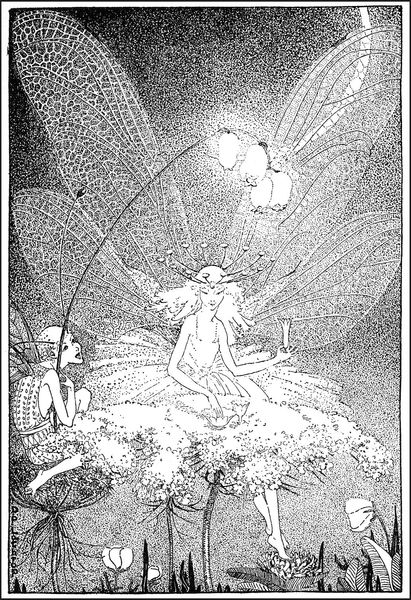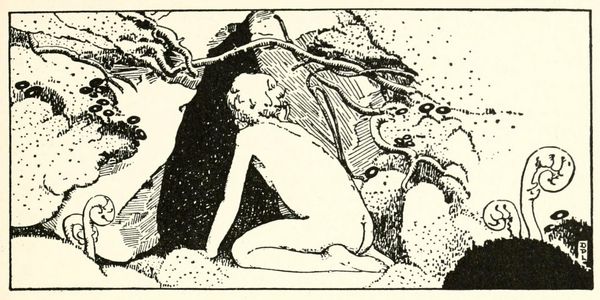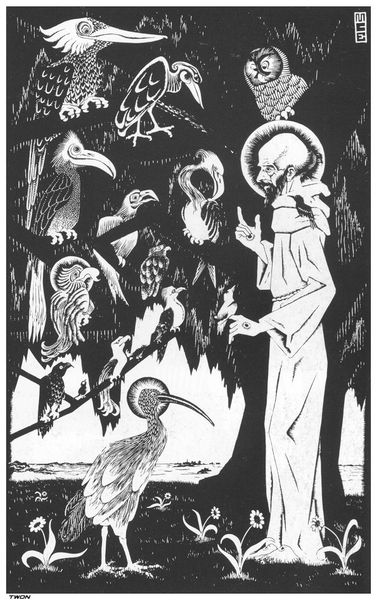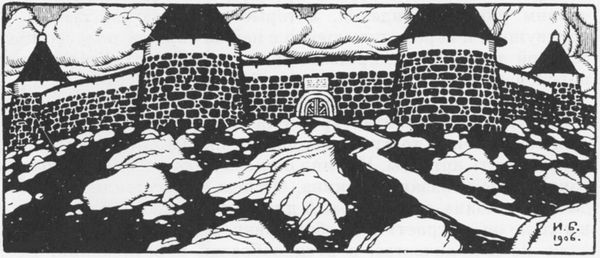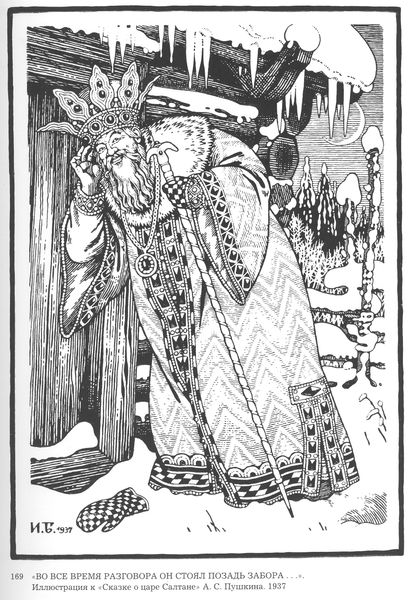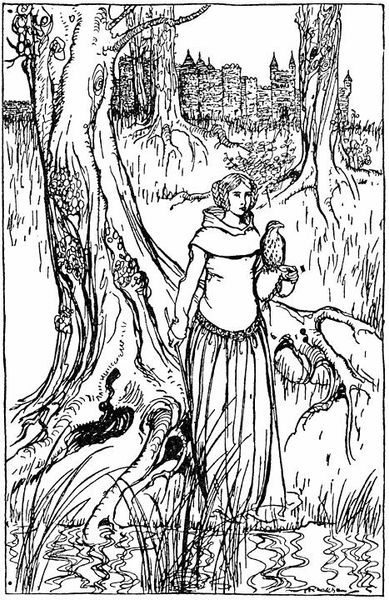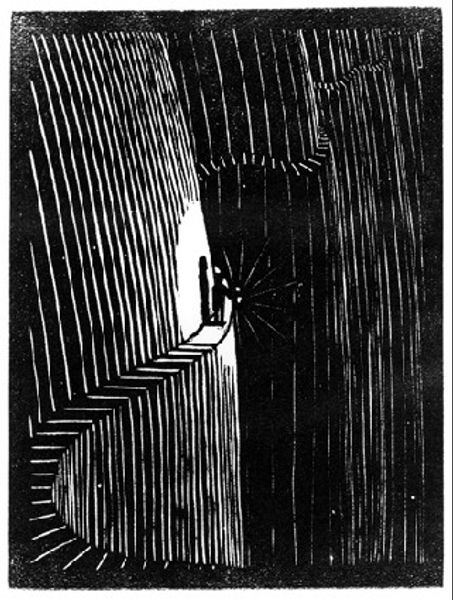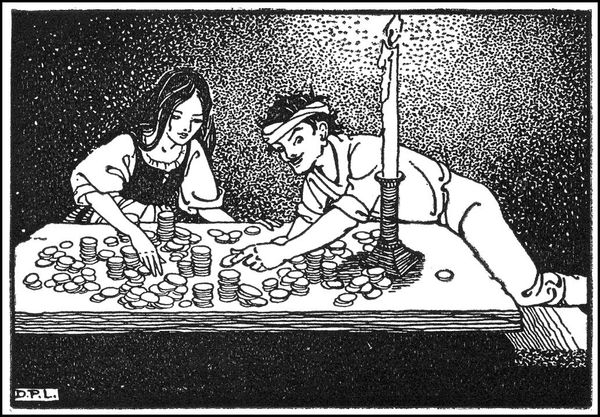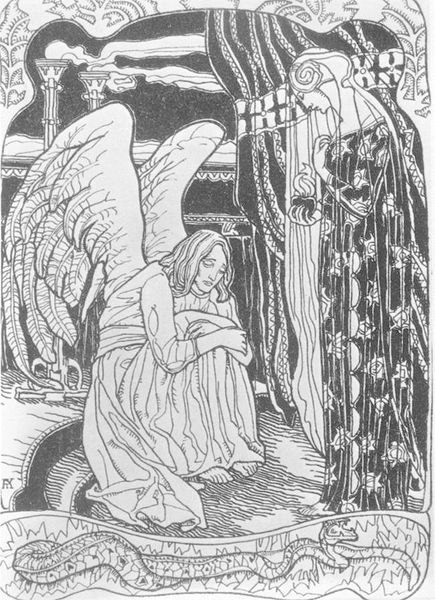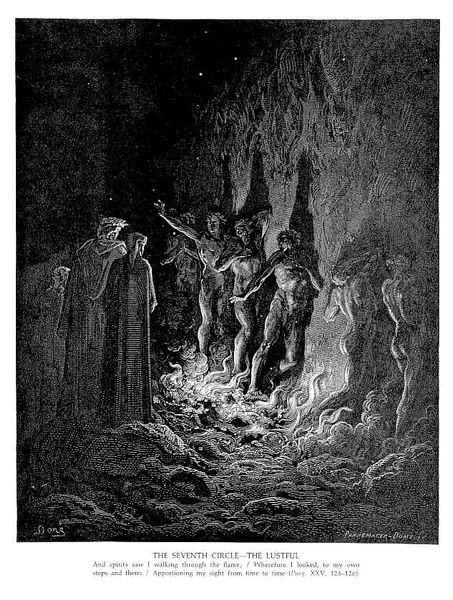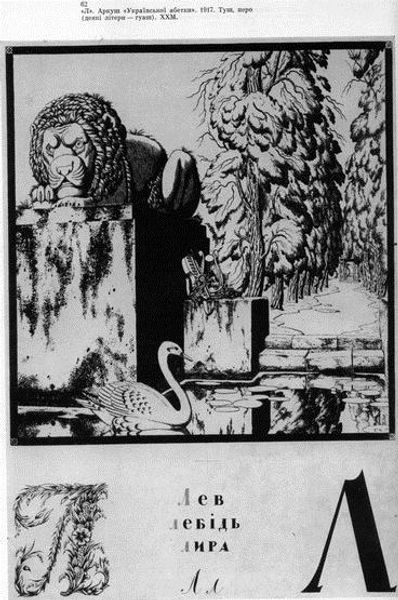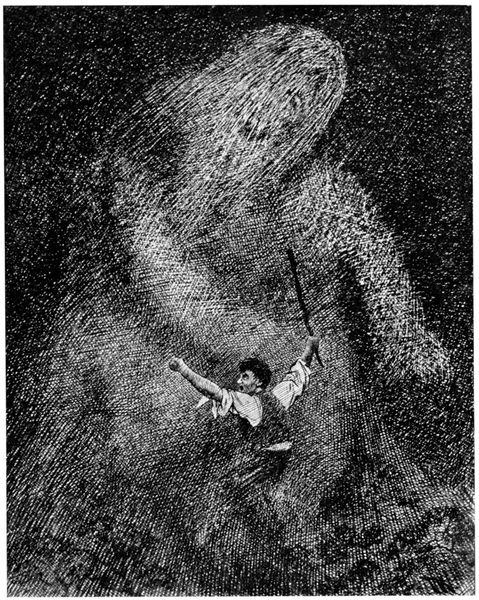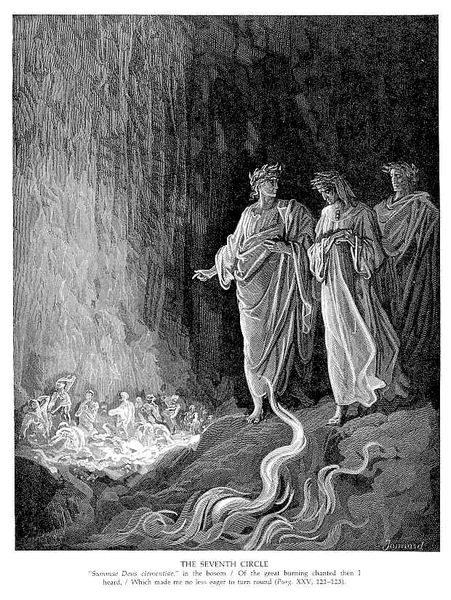
Copyright: Dorothy Lathrop,Fair Use
Editor: Here we have Dorothy Lathrop's "The Treasure of Carcassonne," created in 1928, using pen and ink on paper. It's a fascinating image, and the stark black and white creates a somewhat dreamlike quality. What do you see when you look at it? Curator: I see an interesting intersection of material processes and fantasy. The drawing itself, a readily reproducible form, gives the artwork a potentially wider distribution than, say, a unique painting. Notice the detailed rendering using pen and ink. This emphasizes the labor invested in its creation despite its fairytale subject matter. How does the contrast between the ethereal imagery and the tangible work of the artist speak to you? Editor: I hadn't considered the reproducibility aspect before. It's true, a drawing has a different relationship to labor compared to a painting. The act of painstakingly creating those delicate lines with ink, knowing it could be reproduced, adds another layer. Curator: Precisely. Think about the paper too. The quality of paper Lathrop would have used would directly influence the clarity and permanence of the image, impacting how the artwork would circulate and be consumed. In a sense, the "treasure" is not just within the narrative of the image, but embedded in the materials themselves and the accessibility of reproduction. How might this affect its perceived value within the broader art market of the time? Editor: I guess it positions it somewhere between 'high' art and a more accessible form of visual storytelling, closer to illustration. Thank you! I hadn't thought about it that way. I was too focused on the mythical aspect. Curator: Exactly! It is about recognizing how artistic labor, choice of materials, and reproducibility shapes its cultural value. Hopefully, you have acquired a new perspective on how we should regard material choices in relation to artistic interpretations.
Comments
No comments
Be the first to comment and join the conversation on the ultimate creative platform.
